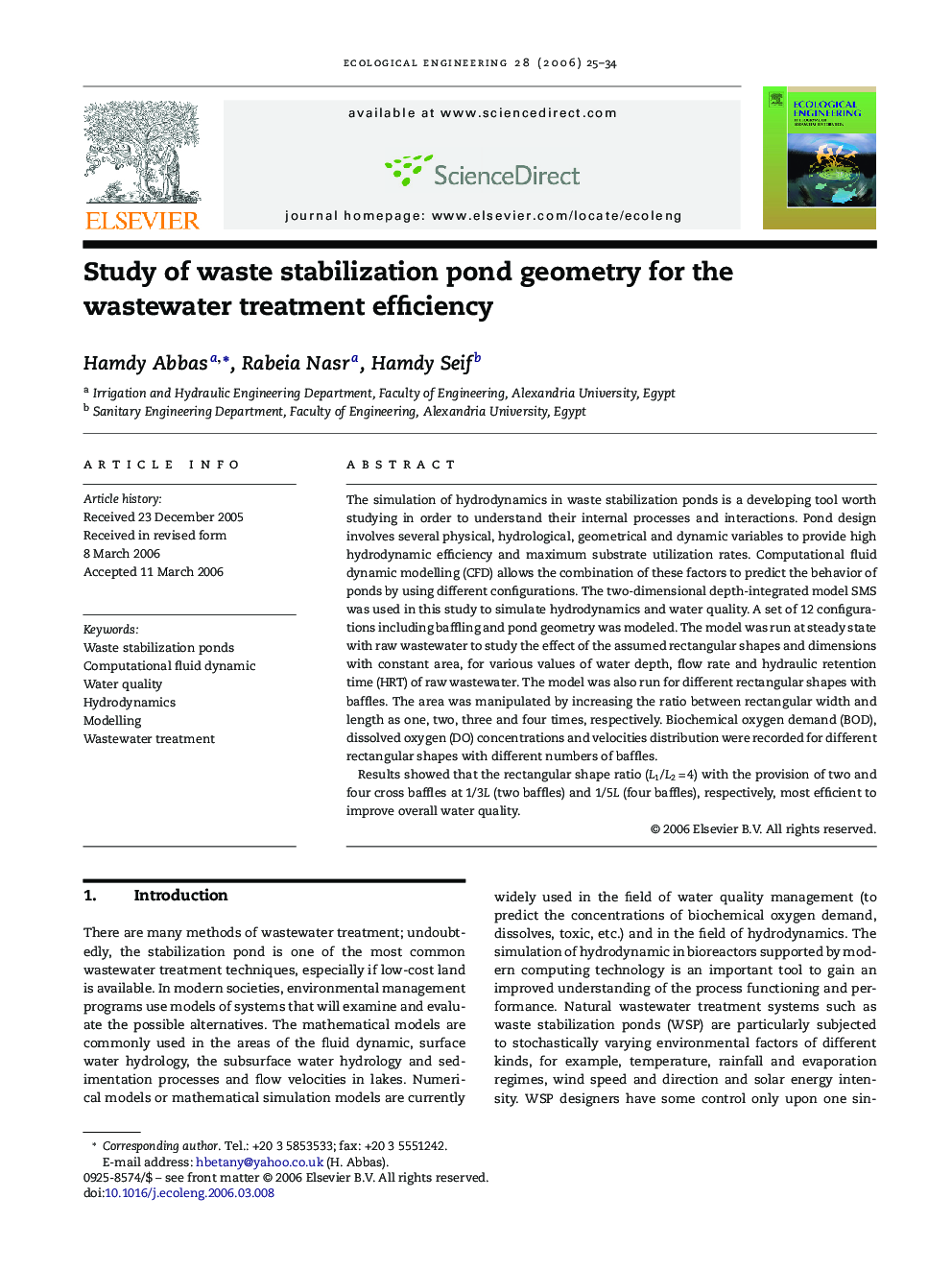| Article ID | Journal | Published Year | Pages | File Type |
|---|---|---|---|---|
| 4391249 | Ecological Engineering | 2006 | 10 Pages |
The simulation of hydrodynamics in waste stabilization ponds is a developing tool worth studying in order to understand their internal processes and interactions. Pond design involves several physical, hydrological, geometrical and dynamic variables to provide high hydrodynamic efficiency and maximum substrate utilization rates. Computational fluid dynamic modelling (CFD) allows the combination of these factors to predict the behavior of ponds by using different configurations. The two-dimensional depth-integrated model SMS was used in this study to simulate hydrodynamics and water quality. A set of 12 configurations including baffling and pond geometry was modeled. The model was run at steady state with raw wastewater to study the effect of the assumed rectangular shapes and dimensions with constant area, for various values of water depth, flow rate and hydraulic retention time (HRT) of raw wastewater. The model was also run for different rectangular shapes with baffles. The area was manipulated by increasing the ratio between rectangular width and length as one, two, three and four times, respectively. Biochemical oxygen demand (BOD), dissolved oxygen (DO) concentrations and velocities distribution were recorded for different rectangular shapes with different numbers of baffles.Results showed that the rectangular shape ratio (L1/L2 = 4) with the provision of two and four cross baffles at 1/3L (two baffles) and 1/5L (four baffles), respectively, most efficient to improve overall water quality.
